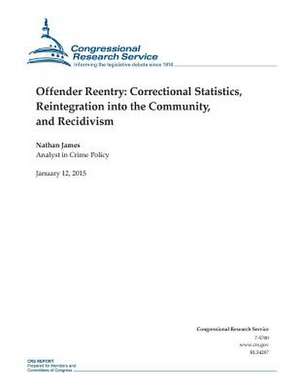Offender Reentry
Autor Congressional Research Serviceen Limba Engleză Paperback
Preț: 123.43 lei
Nou
Puncte Express: 185
Preț estimativ în valută:
23.62€ • 24.73$ • 19.54£
23.62€ • 24.73$ • 19.54£
Carte disponibilă
Livrare economică 17-31 martie
Preluare comenzi: 021 569.72.76
Specificații
ISBN-13: 9781507737415
ISBN-10: 1507737416
Pagini: 38
Dimensiuni: 216 x 279 x 2 mm
Greutate: 0.11 kg
Editura: CREATESPACE
ISBN-10: 1507737416
Pagini: 38
Dimensiuni: 216 x 279 x 2 mm
Greutate: 0.11 kg
Editura: CREATESPACE
